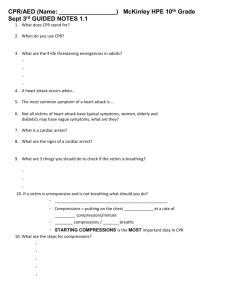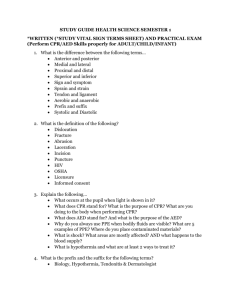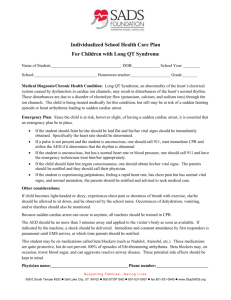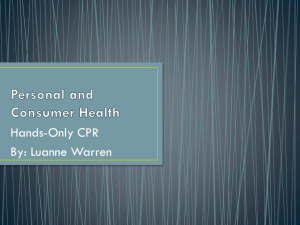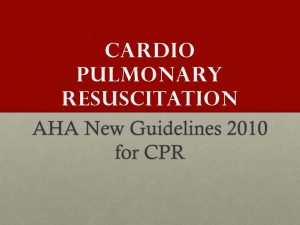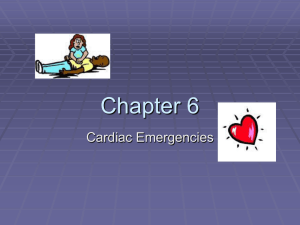Hands Only CPR for 9th Grade LMS
advertisement
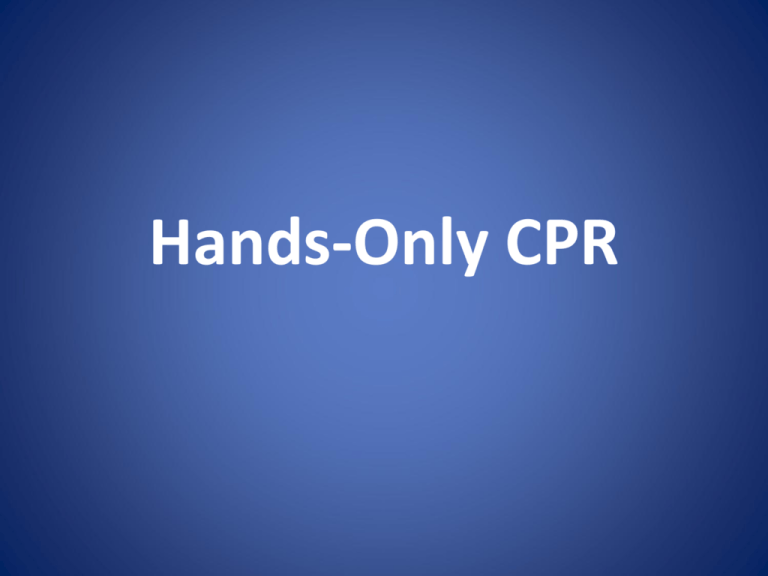
Hands-Only CPR Objectives • Recognize the signs and symptoms of cardiac events/sudden death emergencies • Demonstrate proper procedures of check, call, care • Apply CPR skills from a Red Cross or American Heart Association approved test • Demonstrate knowledge of how to use an AED Bellringer • "Should CPR be required for high school graduation?" I Can Statements I can pass a Red Cross or American Heart Association approved test of CPR skills. I can recognize the signs and symptoms of cardiac arrest and the proper procedures of check, call, care. I can demonstrate knowledge of how to use an AED. Sudden cardiac arrest is the leading cause of death in adults. CPR It is estimated that about 60 percent of heart attacks resulting in cardiac arrest occur in the presence of a witness who might be able to save the victim. About two-thirds of the deaths caused by cardiac arrest occur before victims can reach a hospital. CPR doubles a person’s chance of survival from sudden cardiac arrest. CPR CPR provides oxygenated blood to the brain and heart and keeps these organs alive until defibrillation shocks the heart back to a normal rhythm. Recognize the signs and symptoms of cardiac events/sudden death emergencies (heart attack, drowning, electrocution, and asphyxiation). The Three Cs of emergencies: 1. Check out the situation. Secure the scene allvoices.com 2. Call for help. - locate nearest phone. - provide EMS with current address. - Provide number for EMS to contact 3. Care for the victim. Check the scene for safety. Tap and shout to check responsiveness of the victim. Are you okay? If the victim is unresponsive, immediately send someone or call for help (911) and then begin CPR. Position victim for compressions. Place the heel of one hand on the center of the breastbone, between the nipples. Place your free hand on top and lock fingers. Compress the chest with your upper body weight keeping the heel of your hand centered on the breastbone. Keep elbows locked. Step 3 - Give chest compressions at a rate of 100 per minute. compression depth (2 inches) - speed (100 per minute) Continue compressions until ….. - the victim shows an obvious sign of life - the scene becomes unsafe - an AED becomes available - you are too exhausted to continue - or a trained responder takes over AED KNOWLEDGE AUTOMATED EXTERNAL DEFIBRILLATOR Turn on AED and follow automated instructions. 1. Adjust victim’s clothing to enable pad-to- skin contact. 2. Open pad package and plug in pad connector. 3. Peel pad backing and apply both pads. 4. Wait and stand clear as AED performs analysis. 5. If instructed, press shock button.
